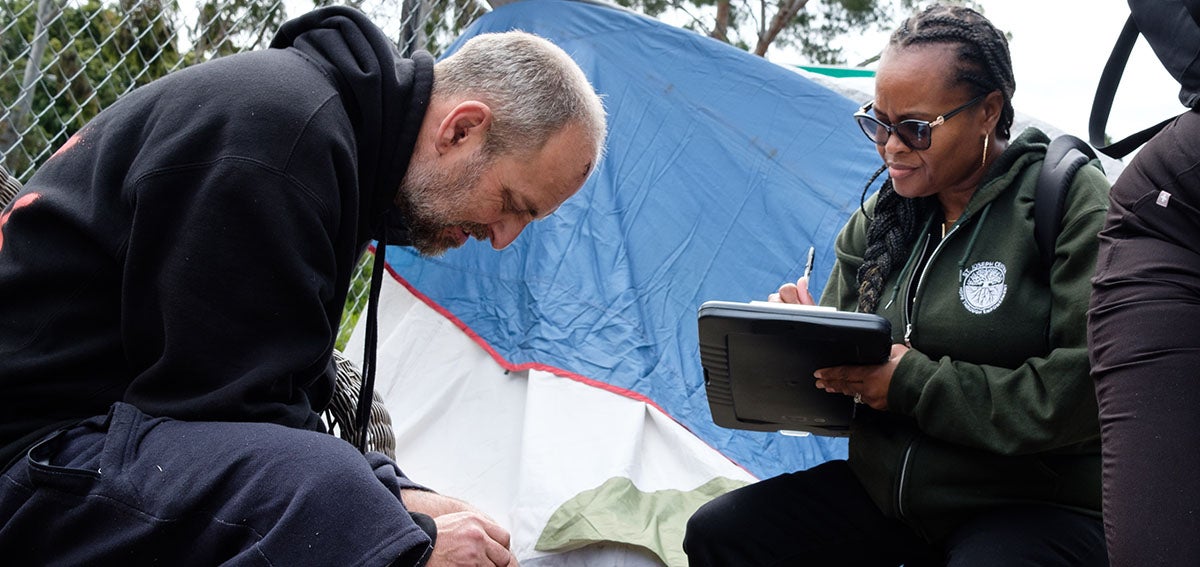Multiple new initiatives, including California’s statewide Medicaid program transformation, CalAIM, have prompted the health care ecosystem to make complex shifts toward expanding and deepening cross-sector partnerships with social service organizations. This is the second webinar in a series from the California Improvement Network (CIN) to help organizations gain a deeper understanding of the intricacies of overcoming challenges in such partnerships.
In this webinar, representatives from a community-based organization focused on housing and a Federally Qualified Health Center in Los Angeles discussed the operational challenges in their partnership to provide street medicine and supportive services to people experiencing homelessness. John Maceri at CIN partner The People Concern and Anita Zamora at Venice Family Clinic shared how this partnership was formed, how they have overcome operational and funding challenges over the years, and advice for other organizations who are in similar partnerships.
People that work in the following roles or areas are highly encouraged to watch the webinar:
- Leaders at all levels
- Staff directing and supporting partnerships within street medicine programs
- Staff at organizations that are seeking to fund similar partnerships
At the end of the workshop participants will:
- Gain a deeper understanding of the intricacies of overcoming spoken and unspoken challenges within partnerships between community-based organizations and health care organizations.
- Learn strategies to address operational challenges within a partnership, including staffing, sharing equipment and data, aligning processes, and gaining consistent funding.
Here are timestamped highlights from the conversation:
3:12 – Maceri and Zamora share the history of the partnership and the purpose that their collaboration serves today.
11:05 – Maceri discusses the challenges of developing the memorandum of understanding (MOU) between the two organizations and highlights how they found ways to mutually support one another to sustain funding for the collaboration. In particular, Maceri and Zamora discuss getting agreement, not only on committing to the work, but how the work gets done to minimize conflict (i.e. finding ways to align differing ways of processing payments, reporting to funders, and data collection).
19:05 – Maceri emphasizes the importance of good communication and trust between the organizations, including coming to shared values so that the partnership is mutually beneficial. Zamora adds that, often, this type of collaboration requires organizations to think beyond what is most efficient for their own agencies but instead what will better the partnerships. She provides the example of Venice Family Clinic asking The People Concern to do double data entry to aid their reporting processes.
25:28 – Maceri and Zamora share some advice to other organizations interested in similar collaborations, including:
- Recognizing what strengths each bring to the table and establishing clear roles.
- Thinking broadly about how to leverage the partnership including when opportunities arise (funding or otherwise) for one agency.
- Ensuring that open communication and trust is established at all levels of the collaboration – from the leadership at the top to those on the ground.
29:45 – Q&A with the webinar attendees.
47:42 – Maceri and Zamora offer final reflections about their partnership.
Related resources:
- CIN Webinar: Developing Mutually Beneficial Funding Models in Community Health Partnerships
- CIN podcast on effective partnerships
- Equitable Co-design in Health Care: How to Incorporate Community Voices to Impact Systems
Learn more about the California Improvement Network, a project of the California Health Care Foundation that is managed by Healthforce Center at UCSF, and sign up for the CIN newsletter.


